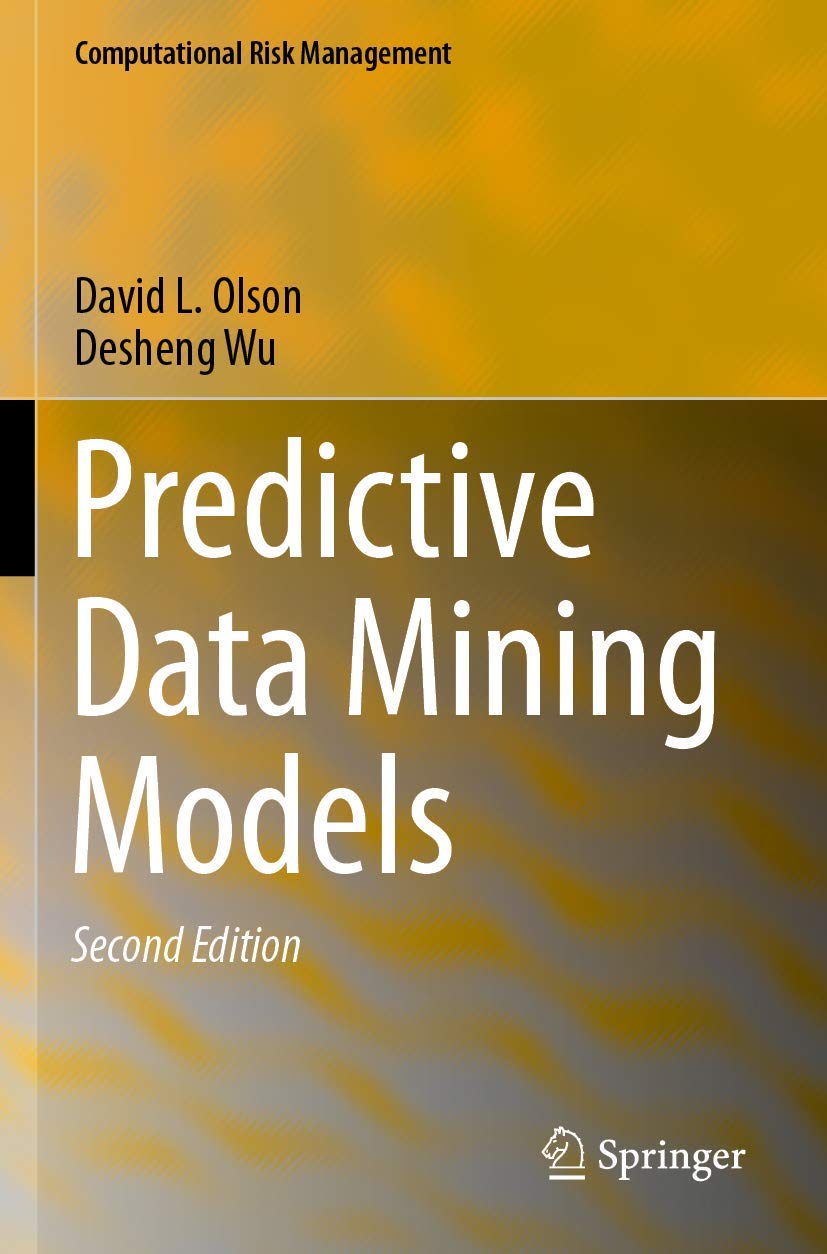Predictive Data Mining Models (Computational Risk Management)
Predictive Data Mining Models (Computational Risk Management) is backordered and will ship as soon as it is back in stock.
Couldn't load pickup availability
Genuine Products Guarantee
Genuine Products Guarantee
We guarantee 100% genuine products, and if proven otherwise, we will compensate you with 10 times the product's cost.
Delivery and Shipping
Delivery and Shipping
Products are generally ready for dispatch within 1 day and typically reach you in 3 to 5 days.
Book Details
-
Author: Wu, Desheng
-
Brand: Springer
-
Edition: 2nd ed. 2020
-
Binding: Paperback
-
Number of Pages: 125
-
Release Date: 21-08-2020
-
EAN: 9789811396663
-
Package Dimensions: 9.3 x 6.1 x 0.3 inches
-
Languages: English
About The Book
This book offers a comprehensive overview of predictive methods in knowledge management, demonstrated using open-source software modeling tools like Rattle (R’) and WEKA. Knowledge management is examined in the context of human knowledge (epistemology), technological advances, and big data, focusing on both the collection and analysis of data.
The book identifies three types of analytic tools:
-
Descriptive Analytics: Provides reports on past events.
-
Predictive Analytics: Utilizes statistical and AI techniques to forecast future outcomes, including classification modeling.
-
Prescriptive Analytics: Uses quantitative models to optimize systems and identify improvements.
Focusing on prescriptive analytics, the second edition of this book has been updated to include more examples related to big data, enhanced coverage of visualization techniques, clarification of concepts, and a deeper dive into association rules and cluster analysis.
The chapters cover:
-
Chapter 1: Overview of knowledge management.
-
Chapter 2: Basic data types.
-
Chapter 3: Time series modeling tools.
-
Chapter 4: Multiple regression modeling.
-
Chapter 5: Regression tree modeling.
-
Chapter 6: Autoregressive/integrated/moving average (ARIMA) models and GARCH models.
-
Chapter 7: Data mining tools used in classification, including support vector machines, random forests, and boosting.
Business-related data sets and software are used to demonstrate these methods. The book aims to provide clear, descriptive explanations of each method, making it accessible to readers with varying levels of experience in analytics.





